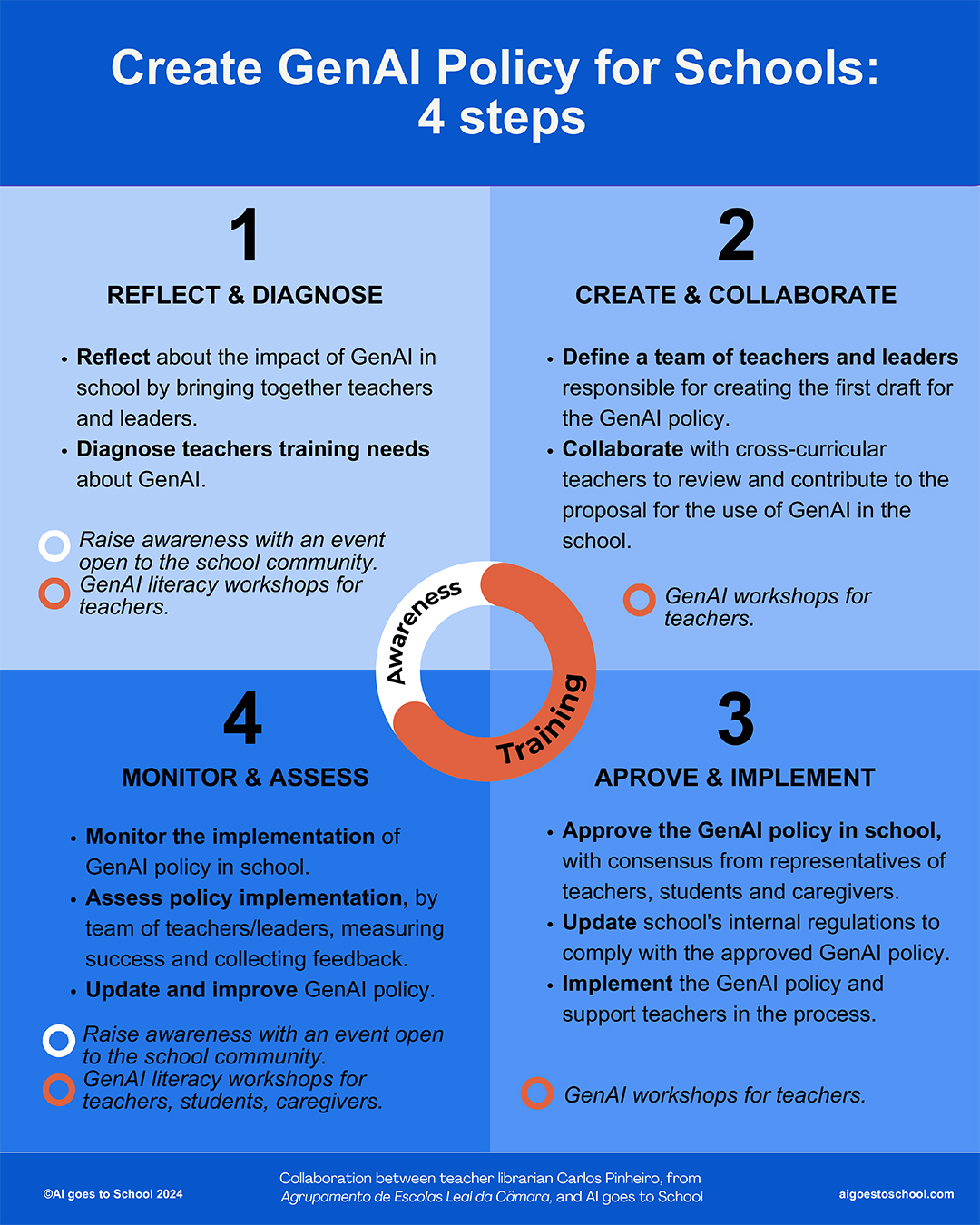
School’s responsibility
Schools are faced with the responsibility of leading and creating policies for the use of Generative Artificial Intelligence (GenAI) and thus helping teachers, students and guardians to learn how to integrate GENI responsibly and ethically, and to enhance pedagogical innovation.
In a collaboration between AI goes to School and Teacher Librarian Carlos Pinheiro, at Agrupamento de Escolas Leal da Câmara Secondary School in Portugal, who led the creation of the GenAI use policies, we defined the 4 main steps that can be used by any school to think about and start the process of creating GenAI policies.
4 Steps:
1 – Reflect and Diagnose: The process begins with a comprehensive reflection on the impact of GenAI in the school, through internal meetings involving teachers and leaders involved in pedagogical coordination and supervision. At the same time, opportunities for reflection should be created through events open to the community, students and parents. These phases foster dialog and the sharing of perspectives. It is crucial to initiate teacher training programs on AI literacy in education, thus building a solid knowledge base for the following phases.
2 – Create and Collaborate: The school should form a team of teachers and leaders, who will be responsible for drawing up the first draft of the guidelines and policies for using AI. This team presents the first draft of the document, and requests the collaboration of representatives from the various subject areas, pedagogical supervision groups and educational guidance. It is essential to guarantee an extended period for contributions and discussions, allowing for broad and reflective participation. During this period, the school should maintain active awareness-raising activities for the educational community and ongoing teacher training in AI literacy in education.
3 – Approve and Implement: After the reflection phase, the team responsible for drafting the document gathers all the contributions and finalizes the guiding document. Everyone should have the opportunity to review, discuss and suggest improvements to the document. The GenAI policy document should then be approved by consensus. A date should be set for its implementation and the educational community should be informed about how they should use this document. This phase should also define how and by whom monitoring and evaluation will be carried out, as well as setting the date for updating the document.
4 – Monitor and Evaluate: To ensure the continued effectiveness of the GenAI policies implemented, there needs to be a team responsible for monitoring and evaluating their impact on the school. For an objective and systematic evaluation, the team should develop specific instruments, define metrics and collect regular feedback from teachers, students and guardians. The results will allow for continuous adjustments and improvements to the school’s GenAI policies.
These 4 steps present an inclusive approach that schools can follow to develop and implement their policies for using GenAI. This process ensures responsible and innovative integration of AI in education, and prepares the entire school community to use and integrate GenAI with confidence.

